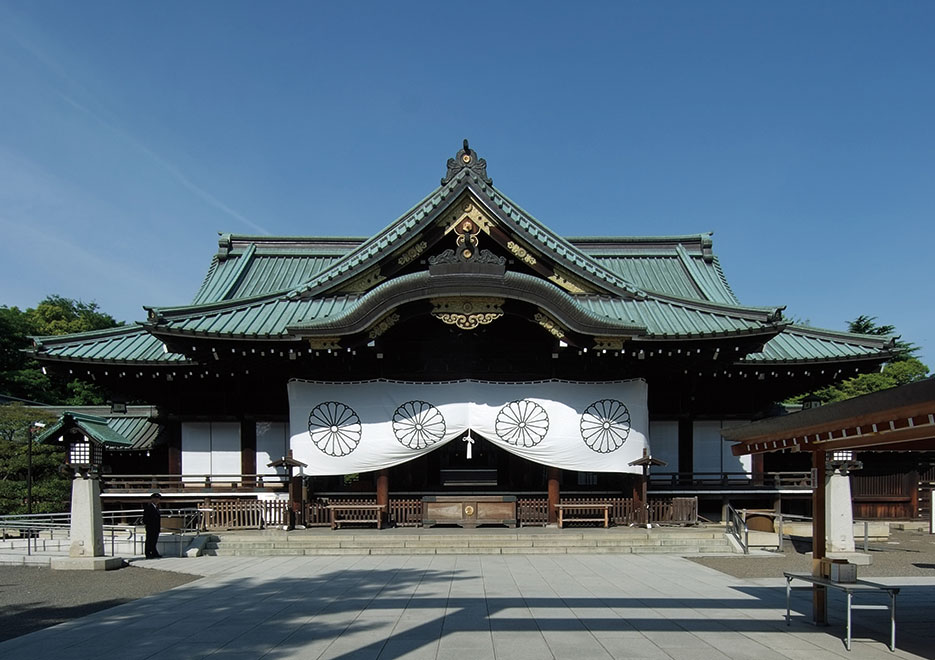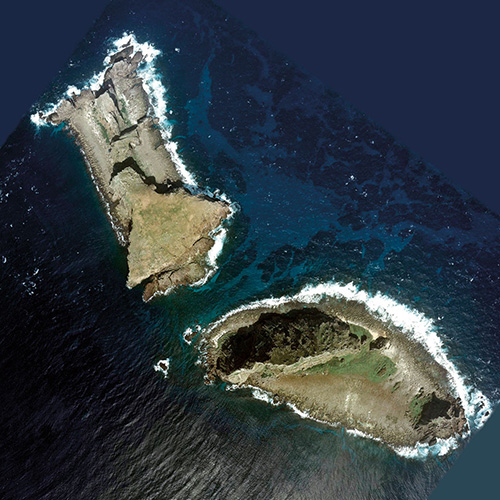Журнальный клуб Интелрос » Joint Force Quarterly » №75, 2014
In 2010, two Japanese coast guard vessels and a Chinese fishing boat collided in the disputed waters near the Senkaku/Diaoyu Islands, sparking increasingly confrontational behavior by both China and Japan.1 The pattern of escalation continued in 2012 when Japan nationalized several of the disputed islands by purchasing them from the private owner. China promptly responded by sending warships to the area in a show of force.2 Although escalation to the point of war is unlikely, these incidents underscore the destabilizing regional effects of the disputed islands and associated maritime boundaries. China’s territorial claims are rooted in historical context, nationalism, national security, and economic interests.3 By understanding China’s perspectives, motives, and approaches to resolving this dispute, the United States can anticipate the current pattern of escalation, forecast future Chinese behavior, and identify opportunities for conflict management and eventual de-escalation to improve strategic stability in the region.

Ground Self-Defense Force soldiers stand in formation with fixed bayonets during opening ceremony Orient Shield XI, a 2-week exercise in Kami-Furano, Japan, which partners Japanese military with U.S. forces (U.S. Army)
Named the Senkaku Islands by Japan and the Diaoyu Islands by China, the group of eight small uninhabited islands in the southern end of the Ryukyu Island chain comprise a mere 7 square kilometers of land.4 In the context of increasingly contested sovereignty in the East China Sea, these seemingly unimportant islands have a far greater strategic significance than size and location would otherwise warrant. The Sino-Japanese friction over maritime resources has created a dangerous military competition in which both countries are applying a zero-sum-gain approach based on sovereignty.5 As the current pattern of escalation continues, the risk of destabilizing the region also increases.
Regional instability in the East China Sea carries several significant risks to U.S. strategic interests. First, increased militarization of the dispute generates pressure for both China and Japan to invest in weapons technologies and additional platforms. Second, as more ships and aircraft operate in the area while China and Japan endeavor to demonstrate administrative control of the maritime boundaries, the likelihood of an incident sparking rapid escalation increases. This carries significant alliance implications for the United States vis-à-vis the 1960 Treaty of Mutual Cooperation and Security with Japan.6 Third, American corporations have economic interests in keeping the sea lines open to international shipping and ensuring access for future energy exploration. Finally, the United States needs to maintain healthy diplomatic relations with China to encourage Chinese acceptance of international norms and promote global economic stability.7 Because these are vital interests to the United States, it is important to understand China’s approach to the dispute when developing a regional strategy.
China’s historical claim to the uninhabited islands dates back to the Ming Dynasty, when the Ryukyu Kingdom served as a vassal state from the 14th to 17th centuries and tribute payments continued until 1875. During this period, Chinese fishermen used these islands as shelter and navigational aids. As Chinese power waned during the Qing Dynasty and Japanese power grew as a result of the Meiji Restoration, Japan formally annexed the islands as part of the Okinawa Prefecture in 1895. The Cairo and Potsdam Declarations led China to believe the Allied Powers would expel Japan from the Ryukyu Islands at the conclusion of World War II. Instead, the United States retained administrative control and eventually returned the Ryukyu Islands, including the Senkaku/Diaoyu Islands, to Japanese administration in 1972.8 The Chinese connect the current territorial disputes to a greater historical context of past treatment by the great powers.9
The “Century of Humiliation” is a powerful narrative in Chinese modern culture invoking nationalism and strong emotions against the great powers. China’s agitation and protests over Japanese textbooks that China feels underemphasize war atrocities and official ceremonies at the Yasukuni Shrine, where individuals convicted of war crimes by the International Military Tribunal of the Far East are enshrined, reinforce and exemplify these deep-seated historical grievances.10
Nationalism builds a strong narrative in China’s domestic views toward the dispute.11 As Japan’s relative economic power declines and China experiences a surge in patriotism with its newfound economic strength, the narrative of the disputed islands increasingly has become one of national pride and just restoration of what rightfully belongs to China.12 Elite power struggles within the Chinese Communist Party, a slowing of the economy, or Japanese actions undermining the legitimacy of the current rulers could increase the sense of nationalism among the Chinese population or even cause China’s political leaders to promote anti-Japanese sentiment to deflect attention from domestic political rancor.13 This sense of nationalism reduces China’s political flexibility in de-escalating or resolving the dispute and may promote inflammatory rhetoric aimed at placating China’s domestic audience at the risk of sending undesirable signals to the international audience.14

Yasukuni Shrine
National security is also a significant factor in China’s approach to the dispute. The U.S. alliance system along the First Island Chain stretching from Japan to Taiwan to the Philippines,15 and arguably as far as Australia with proposed American basing initiatives, serves as a de facto line of containment using an offshore control strategy. While this strategy seems defensive in nature from the U.S. perspective, it directly threatens China’s economic survival by giving the United States the ability to readily interdict China’s shipping.16 Strategically, China would want to prevent total containment17 within the First Island Chain and ensure access to its self-proclaimed exclusive economic zone. In these terms, China’s desire to exert sovereignty over the Senkaku/Diaoyu Islands can be viewed as a natural defensive strategy to protect shipping lanes supporting China’s energy and economic interests. Additionally, China has established a pattern of using military force as a means of signaling in its offshore territorial disputes.18 This pattern of aggressive military signaling increases the potential for incident and conflict.
In understanding the historic context, the strong narrative of nationalism, and the military framing of the dispute, the United States can work toward several opportunities for de-escalation. Foremost, it is essential that the United States maintain a strong alliance with Japan to persuade it from developing a more aggressive national defense force or a nuclear deterrent. Additionally, the United States should continue a policy of strategic ambiguity over the disputed territory and encourage China and Japan to leave the disputed islands unoccupied and not pursue unilateral resource exploration and development.19 China and Japan have already initiated negotiations for energy development in areas of the East China Sea, but confrontation over the disputed islands disrupted the negotiations.20

Aerial Photo of Kita-Kojima (left) and Minami-Kojima of Senkaku Islands, Ishigaki City, Okinawa, Japan (Courtesy National Land Image Information)
The United States could also improve regional stability by promoting joint Sino-Japanese security patrols and development of the economic resources as a means to de-escalate tensions. Joint patrolling builds trust, and joint development can work to decouple use of the resources from the issue of sovereignty.21 China established precedence for joint development vis-à-vis a 2004 agreement for energy exploration in the South China Sea with the Philippines. Although the joint exploration project failed to produce results and was eventually discontinued, it demonstrated the potential of joint development initiatives as opportunities for de-escalation.22 Additionally, a narrative constructed from joint cooperation can work to assuage a small portion of the anti-Japanese sentiment in China.
The United States can also help China and Japan establish bilateral institutions to serve as a mechanism to resolve disputes. For example, a joint Sino-Japanese commission active from 2006 to 2010 reviewed the historic claims to the islands, enabling a shared understanding of the dispute.23Additionally, bilateral institutions can develop policy and establish frameworks to peacefully resolve disputes, thus eliminating the need for risky military signaling. Although China is unlikely to engage in multilateral institution-building at this time because its relative power is greatly reduced in a multilateral environment, opportunities to increase regional security cooperation through multilateral institutions such as the Association of Southeast Asian Nations Regional Forum may arise as bilateral institutions mature.24
Final resolution of the dispute will take time, patience, and commitment by all parties to develop and adhere to a resolution process. In developing this process, the first step is reframing the problem from unilateral enforcement of perceived sovereignty into cooperative enforcement of international norms in accordance with the United Nations Convention on the Law of the Seas (UNCLOS). Strict adherence to international norms would not only reduce the risk of the current dispute escalating into a conflict, but also decrease uncertainty for corporations wanting to participate in joint ventures developing offshore resources.25 In reframing the dispute, China and Japan can change their approach from the current win-lose dilemma into a win-win solution acceptable to both countries.
By understanding China’s perspectives, motives, and approaches to resolving the Senkaku/Diaoyu Islands dispute, the United States can help “create a context in which [China and Japan] can choose to construct a mutually acceptable framework of common practice in the East China Sea.”26 It is in U.S. strategic interests to promote regional stability, maintain strong Asia-Pacific alliances, safeguard international shipping lanes, and ensure access to energy resources. The United States is in a unique position to de-escalate the dispute by encouraging China and Japan to institute joint patrols, joint resource development, bilateral institutions, and adherence to UNCLOS norms. If managed carefully, the United States could assist in de-escalating the Sino-Japanese dispute while simultaneously building a stronger diplomatic relationship based on strategic cooperation between Washington and Beijing.27 JFQ